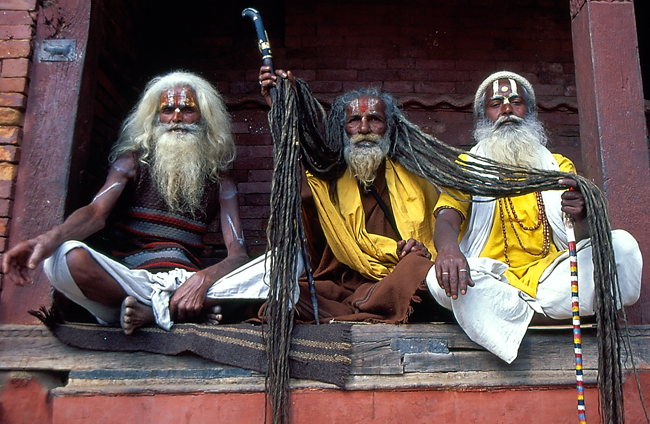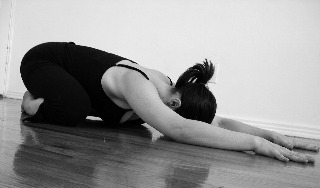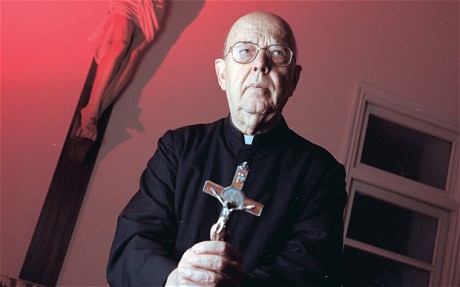Yoga and Catholicism
Today’s post might be a little controversial, but I survived the dating series, so I figure I may as well
I’ve recently been catching up on my Catholic Stuff You Should know backlog. I’ve just finished listening to the podcast episode entitled, Yoga: Is it okay?

This is one of those topics which has always fascinated me. I remember that during my time in the Evangelical world, yoga was generally regarded as pagan and something in which no right-thinking Christian would ever participate.
Among Catholic circles, however, I’ve noticed that yoga is generally not such a “hot button topic”. However, I have come across Catholics who are very seriously anti-yoga and repeat many of the arguments I heard in my Evangelical days. I recently saw a discussion take place on Facebook which demonstrated just this.
I’m open to correction on this subject, but I would like to respond to three common comments I hear on the subject:
1. “Yoga is pagan”
I don’t think there’s any doubt that yoga has its roots in Eastern religions, but…so what? Hindus and Buddhists have prayed using beads long before the rise of Christianity – does that put the rosary off-limits?

But I think there’s a more important question to ask. What are we actually talking about here when we say “yoga”? Are we talking about the physical stretches or are we talking about physical stretches coupled with certain spiritual and philosophical ideas? I would suggest that there is a big difference between the two. This brings me on to my next point…
2. “The postures worship different gods. You can’t separate the pose from the spiritual worship”
This statement quite frankly doesn’t make any sense to me. Is it really being suggested that when people do Yoga X or exercise with Wii Yoga they are accidentally worshiping other deities (which Christians don’t even believe exist)?
It is emphasized again and again in Christianity that simply “going through the motions” is not enough, that our worship needs to be an interior reality as well as an exterior one. Yet, when applied to yoga, some would appear to assert that we can somehow accidentally worship another god simply by our physical posture.

The other problem I have with the above statement is that I’ve been a member of several different gyms and attended many exercise classes where we have done warm-down stretches which look an awful lot like yoga poses: downward dog, child’s pose, cobra, swan… When we did these stretches, was that yoga? It wasn’t called yoga, but if it’s not possible to separate the physical stretch from spiritual worship did I unknowingly worship some false god while I was trying to loosen my shoulder muscles?
3. “The Vatican has condemned yoga”
This is the only objection which would really matter to me were it true. I’ve heard this assertion made a lot, but when I’ve asked for a citation, I’ve never been given a solid reference. I usually find out that it’s not so much “the Vatican” that has condemned yoga, but some priest who is particularly vocal on the subject.
Although certain high ranking priests have condemned yoga, it doesn’t exactly make it binding dogma. Even in these cases though, it’s unclear as to whether this is a broad-reaching condemnation of all stretching exercises, even if devoid of spiritual content.

After a little bit of searching I finally tracked down the often-quoted letter sent by the Congregation for the Doctrine of the Faith. It urges caution in this area (and rightly so) but as far as I can see it doesn’t appear to condemn yoga outright either.
So, depending upon what you mean by “yoga”, I personally think it is something which can be critically accepted; some things are okay, but others are not.
Closing thoughts…
Just to make it clear, I’m not giving carte blanche to all yoga classes. Many, particularly those here in southern California, have a substantial spiritual component with which I would urge caution. However, as far as I can see, certain forms of stretching classes are entirely permissible for Catholics as long as there is no heathen religious component. For me, this is an eating-food-sacrificed-to-idols kind of situation.
As I said above, I’m open to correction on this, so if anyone knows better, please leave a comment below. Bonus points if you quote an official Church document or if you comment after listening to the podcast!
The article Yoga & Catholicism first appeared on RestlessPilgrim.net

Pingback: Yoga and Catholicism - CATHOLIC FEAST - Every day is a Celebration
So it appears you’ve wandered into territory I’m sort of familiar with as I explored eastern religions and practices fairly extensively in my “away from the church years”.
First off, let’s define what “yoga” actually is. The word yoga means to unite/union. Union with what, though? The real goal of yoga is divine union but this concept is mostly divorced from the general western conception of it.
We get our english word yoke from the sanskrit word yoga. Similarly, we get the english word divine from the sanskrit dev/deva. We even get the english word saint from the sanksrit sant! (Just as an aside, if you’re familiar with Fr. Devdas from St. Brigid parish, his name actually means “servant of the divine” or “divine servant.” Dev-a meaning divine, das-a meaning servant. Awesome name for a priest!)
When a westerner hears about yoga they automatically assume it’s about asana yoga (aka hatha yoga) which is based around physical postures. This is only one branch of yoga as there are traditionally 8 (I argue that there are 9):
1. Asana/Hatha Yoga – postures
2. Dhyana Yoga – meditation (similar to meditating on the Mysteries of the Rosary or on scripture)
3. Yama – morality (truthfulness, compassion, etc)
4. Niyama – laws/personal observances (modesty, purity, reliance on God, fasting, etc)
5. Dharana – concentration, inner silence (direct parallel to western contemplation)
6. Pratyahara – control of the senses, non-attachment to creatures and the created
7. Pranayama – Breathing exercises/control (I am aware of eastern orthodoxy’s hesychasm having some breathing exercises)
8. Samadhi – Divine Union. The goal of yoga. Unification of lover and beloved (God and the creature).
(9) Bhakti – Devotion. Like devoting your life completely to God, offering up everything you do, think, and say to Him. Selfless service to others out of love for God. (this reminds me of those brave souls who take on the religious life and consecrate themselves to the Lord).
I propose that we as Catholics already practice some limbs of yoga and don’t even realize it! Meditation? Check! Morality? Check! Personal Observances? Check! Contemplation? Check! Non-attachment/moderation? Check! Devotion? Check!
While I can go on and on about this subject, I’ll do us all a favor and stop here for brevity’s sake and an already long post! Peace!
In our Facebook discussion, my friend Cary mentioned a useful Catholic Answers article.
A recent news article on this topic:
http://www.bbc.co.uk/news/magazine-25006926